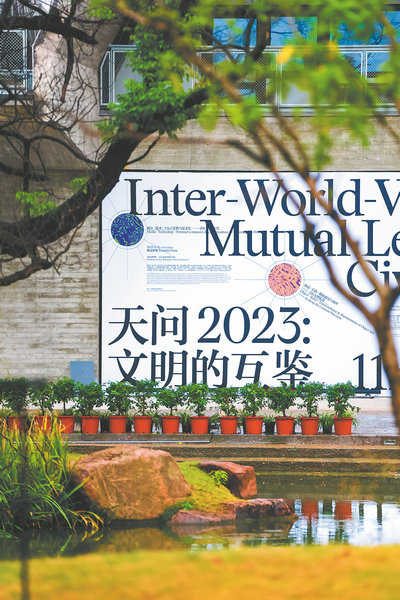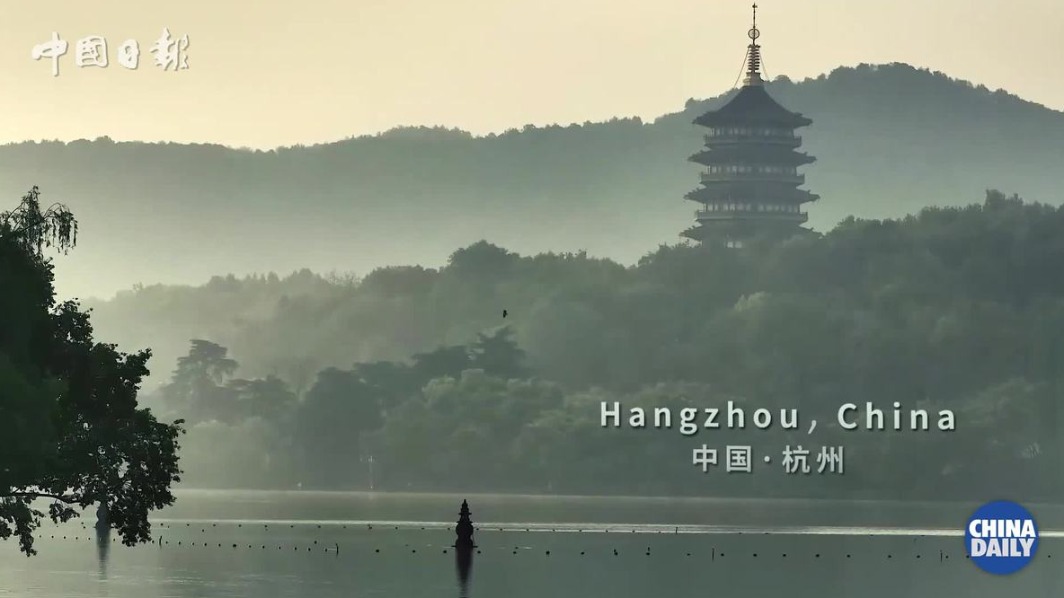the point of art

a project, themed on "mutual learning of civilizations", is the centerpiece of a series of events celebrating the 95th anniversary of the china academy of art. [photo provided to china daily]
academy sends teams to various locations to understand and redefine our creative process.
art reflects the time it was created and also the locality. the china academy of art, in hangzhou, zhejiang province, decided to delve into the historical and anthropological significance underlying the realm of art, extracting profound insights from each unique locale.
the locations 12 selected teams from the academy went to throughout the summer were inspirational. these places included lufeng dinosaur valley in china's yunnan province, the amazon basin in south america, icelandic volcanoes, and the rusakov workers' club in russia, among other pivotal sites.
last month, the teams from the academy convened at the recently inaugurated liangzhu campus, in hangzhou, to host the reports from the world event and the starplex exhibition. during this gathering, they collectively shared thoughts, posed intriguing questions, and presented key findings arising from their diverse global expeditions.
the whole project, themed on "mutual learning of civilizations", is the centerpiece of a series of events celebrating the 95th anniversary of the academy, which aims to view human civilization as a whole, transcending temporal and spatial boundaries.
this series of events turned the liangzhu campus into a vibrant hub of artistic reaction, facilitating an enriching exchange of ideas and fostering a spirit of mutual learning among civilizations.
gao shiming, president of the academy, says that it is a long-term project that aims to reconsider the fundamental issues of art education from the perspective of world civilization history. the project is designed to interweave diverse disciplines internally, broaden both the conceptual and practical realms of art, while forging novel connections externally and constructing a network of international academic partnerships.
"this is a post-pandemic era 'academic initiative' and also a part of our academy's journey toward the centennial of our founding," he says, adding that the goal is to transcend existing concepts of art history and professional views, to reopen the vistas of art and the concerns of the academy, interpreting the history of civilization through art and understanding art from the height of civilization history.
according to jiang jun, general planner of the series of events, the exhibition has been held across the entirety of the liangzhu campus, transforming it into a comprehensive theater with cultural exchange as its central theme.
"we want students to actively engage with various scenes," jiang says.
in the exhibition, a focal point was the central area featuring six prominent platforms, aptly named "desks", which served as a collective showcase of the desk work undertaken by the teams. additionally, 12 documentary films were placed and broadcast throughout the exhibition hall, offering a visual presentation of the tangible outcomes resulting from the team efforts.
"the display adopted a montage-style approach, skillfully organizing a multitude of seemingly unrelated cases through speculative and dialectical methods. it not only created a cohesive presentation but also provided a relevant context for the narrative of the films," jiang says.
the team that researched landscapes and basins created a film, the nonindifferent nature — seeking macondo, recording its trip to the amazon rainforest in south america.
according to tan bin, one of the team members and creators of the film, it's a trip about an imaginary world. "macondo serves as a fictitious town in one hundred years of solitude, a novel by gabriel garcia marquez, often symbolizing colombia. the exploration of colombia is inherently complex, which encapsulates most of the elements associated with our imagination of south america," he says.
"our journey led us from the southernmost point to the northernmost point, traversing from the amazon river to the caribbean sea. this expedition encompassed both spatial and historical dimensions of geography," tan recalls.
tan says that the three-part film, which unfolds a myriad of natural scenes, portrays three layers of macondo. the first part unveils the mystique and enchantment of the rainforest, and the second delves into the early 20th-century life along the caribbean coast. in the third part, the narrative circles back to colonial history, intertwining local knowledge with scientific understanding.
"our intention is for nature, or more precisely, 'nature that is far from indifferent', to emerge as the central narrative element," he says. "simultaneously, it stands as the authentic witness to the extensive passage of time, akin to the towering tree featured at the movie's outset — a living testament with a history spanning over 500 years, coinciding with the arrival of the spanish in the new world," tan says.
the other films cover various themes, such as personal computers, social proposals and cosmic mapping, earthly writing and the containment of time and so on.
throughout the exhibition, a variety of activities were organized to facilitate the exchange of perspectives among all 12 teams. one of the activities was themed on "total catalog", which involved a comprehensive sharing of insights, and a roundtable discussion featuring 12 groups of people who tried to explore the concept of "mutual learning of civilizations".
additionally, there was a forum for practitioners, called roadside picnic, where representatives of the 12 films engaged with teachers and students. it was an interactive session of q&a and dialogues, conducted through open-air classes in 12 camping tents on the liangzhu campus.
the concluding event of the project was the inside-out dialogue. this session highlighted yung ho chang, architect of the liangzhu campus, with four crossover experts engaging in discussions on such topics as education, fashion, and film.
"we aim to be both grounded and visionary — neither solely focused on the path ahead without observing the sky, nor fixated solely on the sky without advancing. through our actions, we consistently challenge our boundaries and probe into universal issues," jiang says.
-
'nice' to meet you, hangzhou
may 6, 2024

